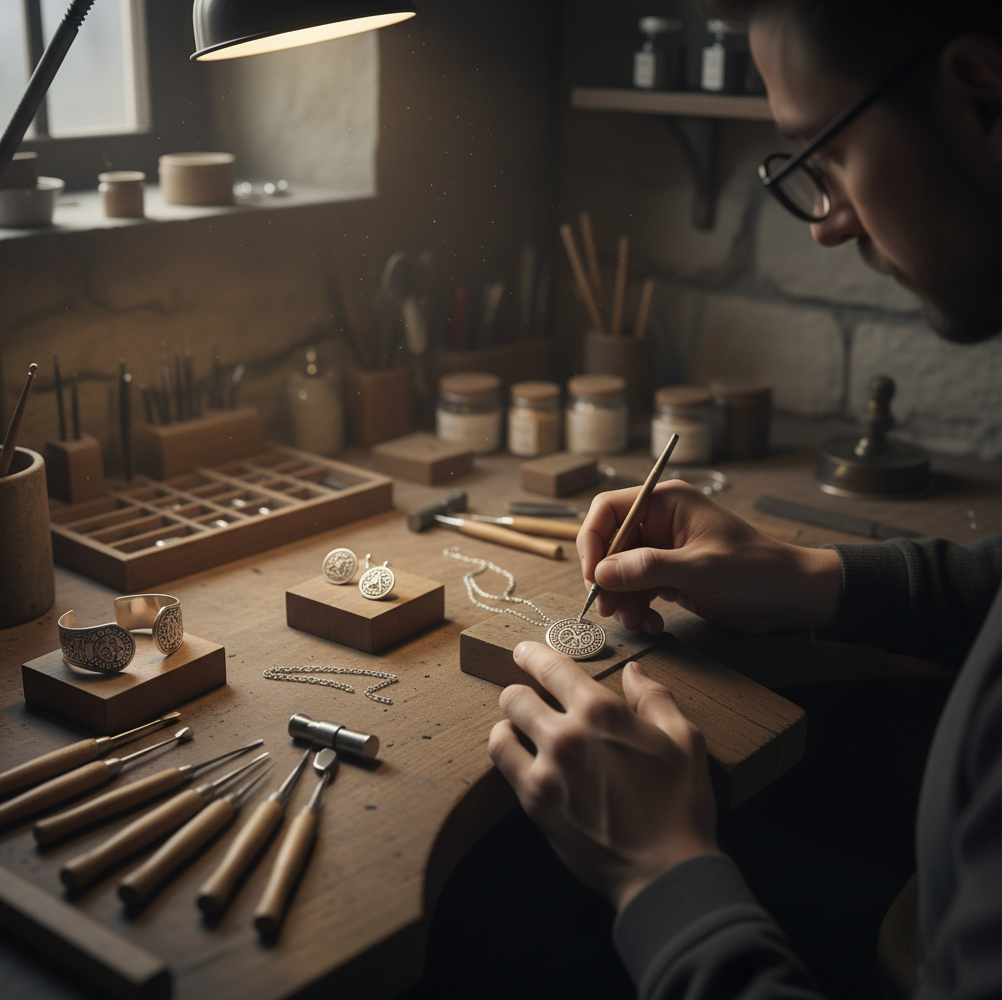
Why Artisans Love Silver: Techniques, Workability, And Design Freedom
Share
Workability At The Bench
Sterling’s malleability and ductility let makers draw wire, raise sheet, and fabricate complex forms without cracking. Copper in the alloy raises hardness enough for day-to-day wear yet keeps the metal responsive under the torch and hammer. (Pure silver is soft; 925 improves strength markedly.
Silver’s high thermal conductivity demands more heat input during soldering than gold alloys, but the payoff is clean flow and strong joints with the right solders and flux. These fundamentals underpin artisan practices from bezel-setting to multi-component architecture.
Casting And Surface
Sterling casts fine detail well and takes both mirror polishes and deep oxidized recesses. Artists often darken backgrounds (intentional sulfide patina) to highlight relief carving—a look that would be harder to maintain on metals that don’t accept sulfide patinas. Conservation literature explains why: silver’s affinity for sulfur creates stable Ag₂S at the surface, which makers can harness aesthetically rather than just fight.
Finishing, Maintenance, And The Customer Experience
Workshops can guarantee long-term service because silver is easy to refinish and resize. Studio aftercare typically recommends gentle detergent plus soft cloth for routine cleaning, and anti-tarnish storage; professional polishing restores luster after years of wear.
Sustainability And Supply
Because precious metals are infinitely recyclable without loss of quality, recycled sterling integrates naturally with circular design. Industry standards (RJC Chain-of-Custody) and third-party certifications (SCS Recycled Content) help small studios communicate sourcing credibly in product pages and line sheets.

